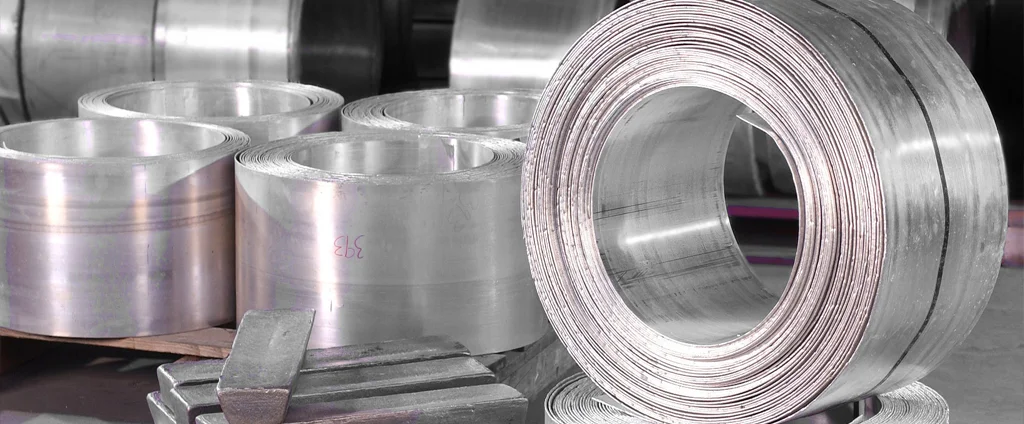Magnesium AZ91C-T6 (UNS S13800)

AZ91C-T6 is a widely used magnesium alloy known for its balanced combination of strength, ductility, and toughness. Commonly applied in sand cast and permanent-mold castings, it serves as a reliable general-purpose material for various industrial applications demanding lightweight yet durable properties.
| Chemical Composition | ||
|---|---|---|
| Element | Min | Max |
| Magnesium | —— | Remainder |
| Aluminum | 8.1% | 9.3% |
| Copper | —— | 0.1% |
| Manganese | 0.13% | —— |
| Nickel | —— | 0.01% |
| Silicon | —— | 0.3% |
| Zinc | 0.4% | 1.0% |
The following table provides a list of magnesium AZ91C-T6 properties in both SI and US customary/Imperial units.
Click on the button to switch between Metric and Imperial units.
| Physical Properties | Metric |
|---|---|
| Density | 1810 kg/m3 |
| Mechanical Properties | Metric |
| Tensile Strength (Ultimate) | 275 MPa |
| Tensile Strength (Yield) | 150 MPa |
| Compressive Strength (Yield) | 145 MPa |
| Bearing Strength (Ultimate) | 515 MPa |
| Bearing Strength (Yield) | 360 MPa |
| Fatigue Strength # of Cycles 1.0e+8 | 55 MPa |
| Shear Strength | 145 MPa |
| Young’s Modulus (E) | 44.8 GPa |
| Shear Modulus (G) | 17 GPa |
| Elongation at Break in 50 mm | 6% |
| Poisson’s Ratio (ν) | 0.35 |
| Brinell Hardness 500 kg load, 10 mm ball | 70 |
| Knoop Hardness Converted from Brinell | 93 |
| Rockwell Hardness | 77 |
| Vickers Hardness Converted from Brinell | 80 |
| Charpy Impact V-notch | 1.40 J |
| Thermal Properties | Metric |
| Melting Point Incipient Melting | ≥ 421 °C |
| Solidus | 470 °C |
| Liquidus | 595 °C |
| Thermal Conductivity | 72.7 W/m·K |
| Specific Heat Capacity (Cp) | 1047 J/kg·K |
| Coefficient of Thermal Expansion (αL) | 26.0 1/°C |
| Heat of Fusion | 373 J/g |
| Electrical Properties | Metric |
| Electrical Resistivity | 1.29×10-5 Ω·cm |
The values in this table are approximate and can vary depending on various factors such as the specific manufacturing process and heat treatment applied to the alloy.
Advantages & Disadvantages of Magnesium AZ91C-T6
| Advantages | Disadvantages |
|---|---|
| Lightweight | Corrosion-prone |
| High strength-to-weight ratio | Limited temperature range |
| Excellent castability | Reduced machinability |
| Good vibration damping properties | Higher cost |
| Recycling potential | Flammability |
Applications of Magnesium AZ91C-T6
Magnesium AZ91C-T6 has various applications across different industries due to its desirable properties. Key applications include:
- Automotive Industry: Its lightweight nature makes it a popular choice for components such as engine parts, transmission cases, intake manifolds, steering columns, and structural elements.
- Aerospace Industry: Employed in aircraft components and structures, including engine enclosures, brackets, housings, and interior parts, valued for its weight-saving benefits.
- Electronic Devices: Used in consumer electronics like laptop cases, camera bodies, smartphones, and portable devices, offering durability alongside lightweight construction.
- Sporting Goods: Suitable for equipment such as bicycle frames, golf club heads, tennis racquets, and other gear where reducing weight is critical.
- Industrial Equipment: Applied in machinery components, tooling, and equipment, benefiting from excellent castability for complex shapes and designs.
- Medical Devices: Utilized in surgical instruments, implants, and portable medical equipment, valued for its lightweight properties and biocompatibility.
